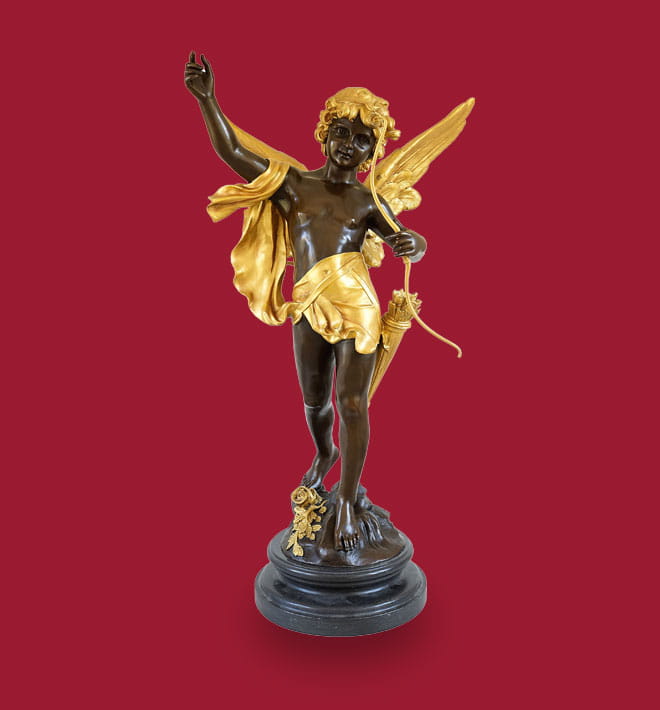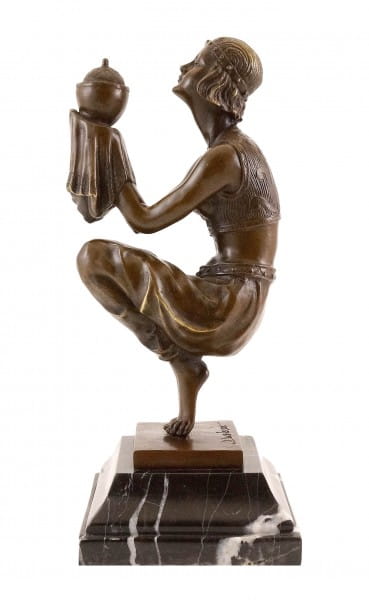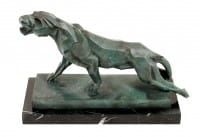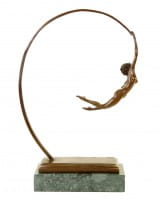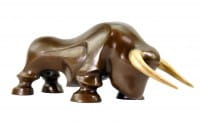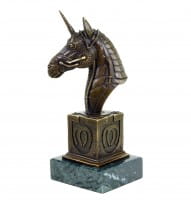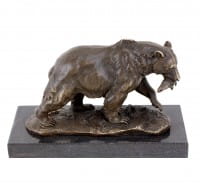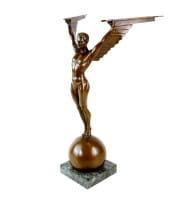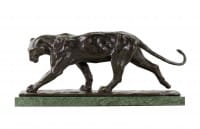Prices incl. VAT, free shipping worldwide
Ready to ship today,
Delivery time appr. 3-6 workdays










Product description
"Oblivion (1920) - Georges Duvernet - Art Deco Bronze Figure"
| Weight | 3,3 kg |
Oblivion (1920) by Georges Duvernet – An Art Deco Masterpiece in Bronze
"Oblivion," crafted by French sculptor Georges Duvernet in 1920, is a stunning testament to the early Art Deco era’s celebration of freedom, elegance, and expressive movement. This bronze figure captures a delicate balance between realism and abstraction, portraying a figure lost in a moment of rapture or surrender. With meticulous detail and striking emotional depth, "Oblivion" reflects the transformative spirit of the 1920s—a period defined by new artistic freedoms and explorations of the subconscious. Mounted on a marble base, this piece is a compelling fusion of classical ideals and modern aesthetics, embodying the Art Deco movement’s fascination with form, emotion, and timeless elegance.
Georges Duvernet – The Artist’s Vision and Legacy
Georges Duvernet (1870-1950) was a noted sculptor of the Art Deco period, celebrated for his ability to infuse his works with emotional nuance and vitality. While his body of work covers a range of themes, Duvernet is best known for his figures that capture the dynamic energy of dance, music, and human emotion. In "Oblivion," he brings together his sculptural expertise and his sensitivity to the human psyche, allowing the viewer to feel the intensity of the figure's emotional experience. This sculpture remains one of Duvernet’s most profound works, exemplifying his belief that art should evoke both beauty and mystery.
The Cultural Context – Art Deco and the Jazz Age
The year 1920 marked the beginning of the Jazz Age, a period of cultural flourishing, where music, dance, and art all sought to break free from the constraints of the past. Art Deco emerged during this period, drawing on a mix of influences from neoclassicism, cubism, and exoticism. "Oblivion" is emblematic of this era, capturing a sense of freedom and individuality that resonated with the people of the time. The sculpture’s dynamic form and suggestive posture reflect Art Deco’s boldness, with a particular emphasis on self-expression and movement, which were key themes of the era.
Design and Composition – A Study in Form and Emotion
"Oblivion" portrays a figure in a deeply evocative pose, her body arched backward in a state of surrender or ecstatic release. The lines of her body are smooth and elongated, emphasizing both grace and tension. Duvernet’s attention to anatomy is remarkable, with every muscle and contour adding to the sense of fluidity and intensity. The figure’s head is thrown back, eyes closed, capturing a moment of transcendence or pure emotion.
The intricate details, from the drapery of the garment to the expressive positioning of her hands, add layers of complexity to the piece. The polished bronze surface enhances these details, casting soft reflections that change with the light, bringing a sense of life to the figure. Mounted on a marble base, the sculpture has a grounded elegance, balancing the upward energy of the figure’s movement with the solidity of the base.
Symbolism – The Concept of "Oblivion"
The title "Oblivion" suggests themes of loss, surrender, or escape. In the context of the 1920s, a time when society was recovering from the aftermath of World War I, many artists explored themes of liberation and existential reflection. This figure may symbolize the act of letting go, of transcending earthly struggles, or of surrendering to a deeper emotional or spiritual state. Duvernet’s work here invites viewers to reflect on their own experiences of release or transformation, making it a deeply personal and evocative piece.
Art Deco and Modern Sensibility – A Timeless Appeal
Although a century old, "Oblivion" remains timeless in its beauty and emotional impact. Art Deco’s influence continues to be celebrated in contemporary design, and this piece epitomizes the movement’s elegant, streamlined aesthetics. The figure’s pose, while specific to the style of the early 20th century, also resonates with modern viewers, offering a universal message about human emotion and the desire to transcend.
Conclusion
"Oblivion" by Georges Duvernet is not only a masterpiece of Art Deco sculpture but also a powerful exploration of human expression and emotion. Through the skillful manipulation of form and detail, Duvernet has created a figure that is both deeply personal and universally resonant. This bronze sculpture stands as a tribute to the timelessness of beauty and the transformative power of art, capturing a moment of pure oblivion that invites viewers into a world of introspection and aesthetic pleasure. Whether displayed in a home, gallery, or collection, this piece remains an enduring symbol of the Art Deco era's daring elegance and emotional depth.
Our advantages
free shipping
Worldwide free shipping
14 days money back
You can cancel your order
within 14 days
secure payment services
Paypal, Master Card, Visa, American Express and more

